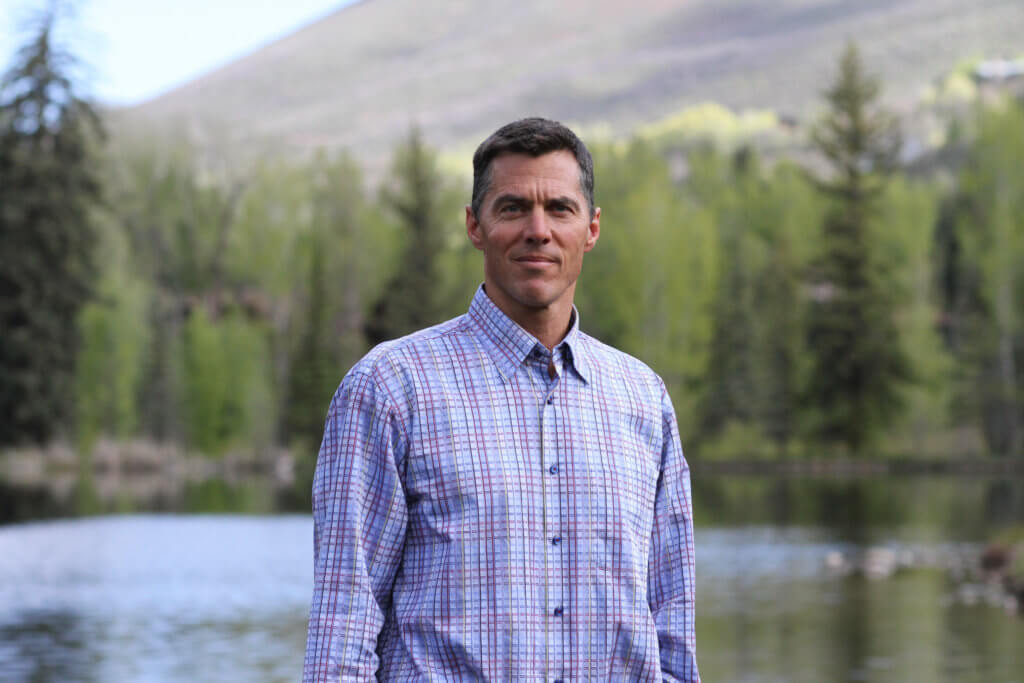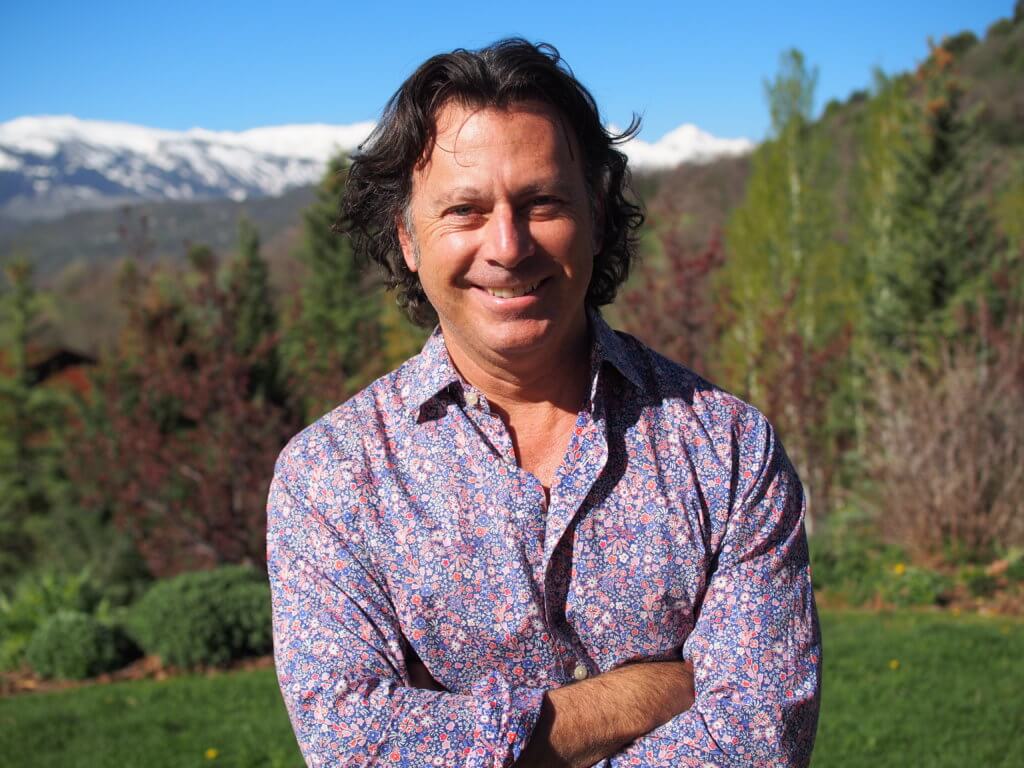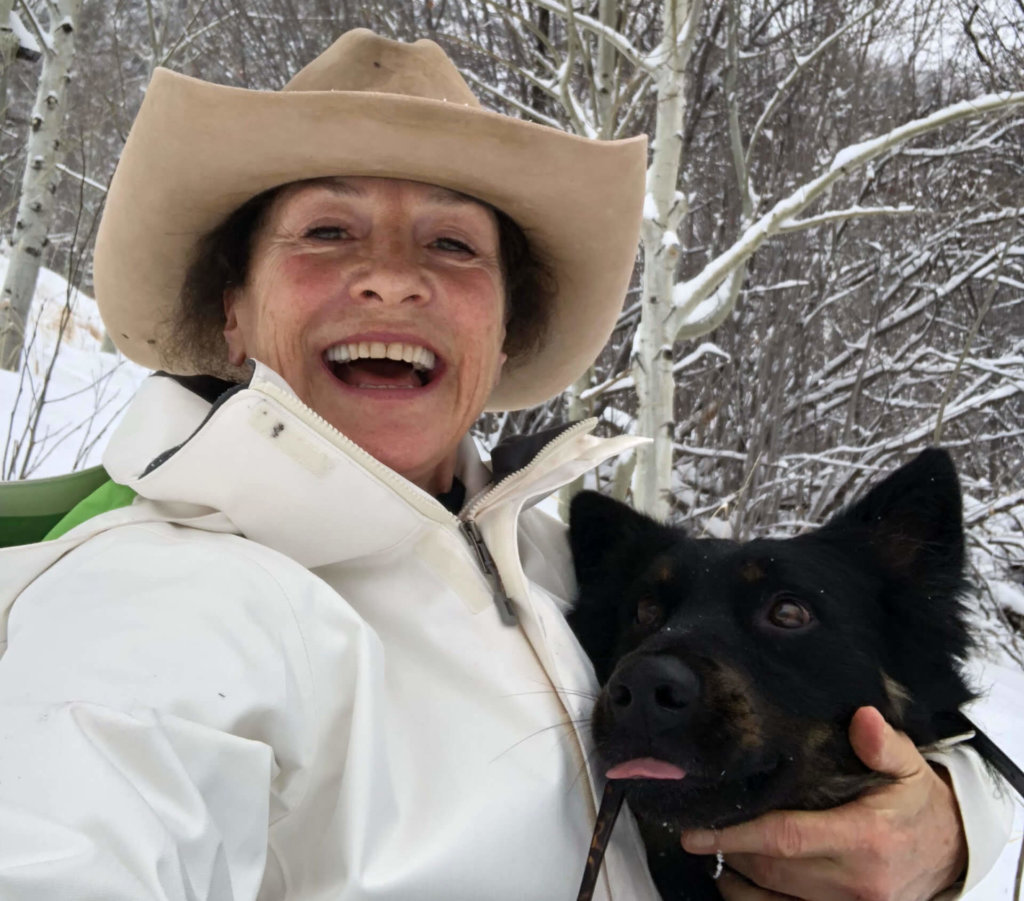ACES is currently lead by an extraordinarily dedicated and qualified staff and Board of Trustees. A demonstration of their passion and commitment can be seen in these interviews with the CEO, Chair of the Board, and Chair of The Legacy Council. ACES needs strong leadership to launch our capital campaign, which will fund facility and programatic enhancements. Together, we can ensure that the next fifty years are as strong and relevant as the first fifty.
A Talk with CEO Chris Lane

You’ve been leading ACES for 8 years; what was your path to this position?
My first interest in nature and the outdoors began at my grandmother’s lake house. I came to love birds and snakes, and eventually knew I wanted to get into the environmental field. Following a degree in Environmental Engineering from the University of Florida, I spent 25 years in the corporate sustainability field, working with such diverse clients as the Sierra Club, Aspen Ski Co., and Xanterra Parks & Resorts to help them manage the environmental impacts of their operations related to energy, water, waste and climate. I traveled a lot, but when I married and had children, I wanted to be with them and to work locally. I became aware of the position opening at ACES, and, while interviewing, one of the Board members asked me, “Do you want to be part of the ACES family?” That convinced me, because we have shared values.
The $12.5 million Protecting the Future campaign has several components. What do you feel is the most important goal?
Our number one priority is to change the world. We believe that we are making the world a better, more aware, more thoughtful place through all of ACES’ programs connecting people with nature through education and direct experience.
We have 150,000 education contacts each year, our intern program is the best in the country. Our work is regional, but we are influencing the minds of people at a national scale. We get to interact with the leaders from all over the world, and when you think about, everyone who comes to Aspen, comes for the environment.
With contributions to this campaign, we will be able to ensure that our educational facilities are world-class, safe, functional, and durable, and all the top-notch programs are sustainable for another 50 years.
Anything you’d like to add?
I’m grateful for ACES’ outstanding staff and committed Board, and we’re all appreciative of the community for being a part of this foundational organization. Nature and its ecosystems are the most valuable “commodity” of the future. I hope everyone will pitch in to help this campaign succeed.
About Daniel Shaw

One could say that Daniel Shaw married into ACES. In 2001, when he and his future wife, Isa Catto, were in Aspen to get married, a friend of her family gave them a wedding party at Hallam Lake. It was the first time he had been. They moved to Aspen full-time in 2004, the same year that Isa’s parents, Jessica and Henry Catto, helped ACES purchase the Toklat center in the Castle Creek Valley.
When Daniel and Isa’s daughter and son (now 18 and 14) were the right ages, they participated in ACES summer camps. Family friends served on the Board of Trustees, and, before long, Daniel was asked to join the Board.
A lifelong professional journalist, Daniel worked at various magazines and newspapers, including the Washington Post and the L.A. Times. Upon landing in Aspen, he became a freelance writer, and has contributed to all the local magazines, hosted a show on KAJX and written a book on the history of Anderson Ranch Arts Center.
Daniel has been Chair of the ACES’ Board for a year and half. When asked about that, he said, “It’s a great joy as board chair to work with Chris Lane, our incredibly committed CEO, and the amazing staff to advance ACES’ goals and mission and help bring these campaign projects to life.” He also clearly enjoys the young naturalists who come to Aspen to work for ACES: “They are so bright, educated and committed, they give me hope for the future of the environment.”
Daniel set a great example as Board Chair when he and Isa gave a stretch lead gift, through the Catto Shaw Foundation, to the current capital campaign—specifically for the renovation of the Catto Center at Toklat. “It wasn’t a hard decision; we are committing our resources to the intersection of conservation and community, so leading the charge to make sure Toklat reaches its full potential as a place for everyone and anyone to convene and converse in such a magical setting was a natural fit.”
An Interview with Margot Pritzker,
Chair, ACES’ Legacy Council

How and When Did You Get Involved with ACES?
I first got involved in ACES when Chris Lane started as CEO, about eight years ago. A few of us, John Doerr, Jerry Murdock, Amy Margerum Berg, Jerry Hosier and John Bennet, had formed an organization called For the Forest. When we had brought our project in the Hunter Creek Valley to a close, Chris suggested that our work could fold into the forest health research which ACES was already doing. We agreed, and when ACES’ Legacy Council was formed, I started serving as Chair. For me, it’s good to be a part of the legacy of ACES.
You and your husband, Tom, have pledged $1 million to this campaign. What motivated you, and how did you decide on that amount?
One of the Board members, who happened to be my son, Ben Pritzker, came to see us about the campaign. He suggested that amount, and let us know that a few other donors had made such pledges. That influenced us to give at the same level, and it’s why I always advise donors to not give anonymously. Leadership helps, and knowing what others have given helps.
Tom’s and my approach to philanthropy is to invest in people, and we wanted to invest in Chris and the team he has put together. He’s a very special CEO who injects ambitious energy into his role. We appreciate that he brings to management a for-profit attitude by, for instance, providing financial statements that make sense. Chris deserves the support and respect he gets, and I believe ACES is going to do great things.
What is most compelling to you about ACES and its campaign goals?
Everything that ACES does is normalizing talking about the environment. It’s got to be what we all talk about! Their programs start with such young kids, and they’re teaching us to see ourselves as stewards…I really think it’s critically important.
Renovating Toklat and offering it as a retreat center “disconnected from a wired world” will be a wonderful accomplishment. And the fact that the extensive educational programs, and the example of sustainable agriculture at Rock Bottom Ranch are replicable models means that ACES’ impact will be beneficial well beyond the Roaring Fork Valley.
Anything you’d like to add?
Wonderful people are associated with ACES!
